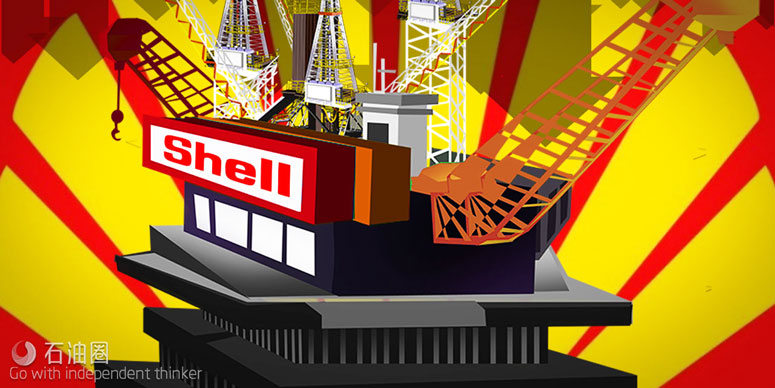
2017年伊始,面对行业回暖,美国页岩领域开支不断增加,大部分石油巨头似乎都在蠢蠢欲动,如道达尔收购图洛石油乌干达项目股份、statoil计划增加30%的钻井勘探活动……而在此背景下,16年就已大动筋骨的壳牌,17年又会有怎样的举动呢?
作者 | Nick Cunningham
编译 | 阿佳徐
2016年的壳牌可谓是出尽了风头,不仅问鼎最受欢迎行业雇主,还完成了BG收购,成为LNG行业当仁不让的“霸主”,甚至在巴西盐下层领域,壳牌也占据着不容忽视的主导地位,但常年高支出和极速膨胀的赤字,迫使这家荷兰石油巨头不得不在2017年下定决心“减肥”!
壳牌债务水平攀至新高度
即使2017年油气业的好气象能极大改善全球油企的财务现状,也不代表每家油企都能以相同方式搭上油市反弹的“快车”。比如,美国小型页岩企业的资产大多集中在高利润业务领域,如二叠纪盆地,这些企业可以趁着形势好,在新一年里提升支出、增加钻井活动,以改善企业运营状况;但对于像壳牌一样的大型油企来说,他们资产涵盖了上下游全部领域,业务遍及全球,面对市场回暖,他们可能无法快速做出反应,运营欠缺灵活,因此他们会选择与小型企业完全不同的发展战策略。
这种模式虽能使石油巨头们在油价波动时拥有更强的抗压能力,但也有可能使他们无法尽情享受2017年的潜在惊喜。
壳牌就是其一,该公司今年将减缓扩张步伐,进一步缩紧战略基金。2017年,壳牌债务水平仍居高不下,最新数据显示,壳牌债务已膨胀至780亿美元,比埃克森美孚(负债462亿美元)高出40%;此外,壳牌杠杆比率(债务与股本比率)也高达29%,远高于其他石油巨头。
潜力无限 瘦身皆因它起
BG收购案是造成壳牌债务飙升的主要原因,该公司于2016年以530亿美元收购BG后,不仅一举成为全球最大的LNG出口商,而且获得了澳大利亚和东非地区规模庞大的气田。
壳牌始终相信,LNG领域的发展是一场长期博弈,未来几十年,尤其是中国,天然气需求必将大幅提升,扩张天然气领域版图绝对是抢占未来商机的不二之选。且2017年,Cooper Energy也收购了Santos维多利亚天然气资产,Energean也在天然气领域投入大笔资金……这些油企的最新动向似乎也印证了壳牌的说法。
因此,即使公司负债提升、运营风险增加,壳牌也要博得先机,成为未来天然气供应领域的主宰者。公司高管们打赌,壳牌将在未来几年收获意想不到的回报。但在等待回报的过程中,壳牌不的不勒紧腰带。
为了偿还债务,壳牌也早已制定了一项长期“套现”计划。而执行530亿美元的收购案无疑是为壳牌紧缩支出、资产套现带来了更大紧迫性。壳牌计划于2016-2018年剥离300亿美元资产,而2016年,壳牌仅剥离50亿美元资产,低于60-80亿美元的目标值。
壳牌准备剥离的资产遍布全球,包括北海价值30亿美元的一批油田及加蓬、新西兰、伊拉克、泰国的业务等。公司坚称,其将在今年加快资产剥离速度,完成预定目标,以维持股息分红并扩大现金流。
而即使公司承诺了股息保持不变,壳牌债务问题也是股东们最担忧的问题。尽管公司已经开始实施资产剥离计划,但能否真正降低负债率才是说服股东的关键。
研究公司Sanford C. Bernstein在近期报告中指出,壳牌的高净债额及缓慢的资产剥离速度仍是投资们需考虑的首要问题,因为这是削减股息的主要风险。
壳牌忙“瘦身” BP玩“反转”
在壳牌缩紧财政步伐的同时,它的英国同行BP正打算随着市场反弹而大展拳脚。BP于2016年末签署了诸多协议,并将在阿布扎比、毛里塔尼亚、塞内加尔、埃及及美国墨西哥湾的原油项目上增加数十亿美元预算。
BP与壳牌的发展轨迹不同,自2010年深水地平线事故后,BP经历了为期5年的财政紧缩期,那时,壳牌正处于扩张热潮,而此时情况却恰恰相反,壳牌开始了缩紧之路,BP却准备扩张。
近期,Dudley也向彭博社透露, BP已经从深海地平线事故的阴影中走了出来,现在正是公司重新定位、发展的黄金时代!
若2017年油价能持续回升,那么所有油企都将受益,但这并不意味着每个企业都将利用这个时机进行扩张或增加钻探活动。大放异彩后,也许养精蓄锐才是上上之策。
Oil prices are rising and the industry is poised for a rebound, with U.S. shale spending set to soar in 2017. But for Royal Dutch Shell, this year will be much more mundane as years of high spending and ballooning deficits force the Anglo-Dutch oil major to retrench.
Even as the New Year promises to bring a sharp improvement in the finances of oil companies across the world, including Shell, not everyone will approach the rebound in the oil market in the same way. Smaller U.S. shale companies, with assets concentrated in some highly profitable areas such as the Permian, are planning to sharply increase spending and drilling. But the oil majors are less nimble, having assets diversified upstream and downstream, spread out across the globe. They were able to weather the oil price downturn better than their smaller peers, but they respond much more slowly to fluctuations in the oil market. That stability is a feature for many investors looking to avoid volatility, but it also means that 2017 may not bring much excitement from the majors.
Shell, more so than some of its peers, will be seeking a smaller footprint this year. After spending more than $50 billion on BG Group, the war chest is running a little low. On top of that, Shell has seen its debt pile swell to an astonishing $78 billion, much more than other oil majors. That is 40 percent more than the $46.2 billion in debt that ExxonMobil reported at the end of the third quarter of 2016. Shell’s gearing ratio – a ratio of debt to equity – topped 29 percent, which is alsohigher than its peers.Related: The End Of The Rally? Oil Reverses, Natural Gas Trounced
The hefty price that paid for BG Group, Shell insists, will ultimately prove to be worthwhile. The acquisition was a long-term play on LNG, with sizable assets in Australia and East Africa. Shell is now one of the largest exporters of LNG in the world, and the company is betting on rising demand for gas, particularly in China, for decades to come. Shell has run up its debt in order to position itself as the dominant global gas supplier, a move that company executives believe that bet will pay off big-time in the years ahead.
But while it waits to see returns on those investments, Shell will have to tighten its belt in the interim. Even before the purchase of BG Group, Shell had laid out a multiyear divestment program in order to pay down debt. The $50 billion price tag for BG Group has put a much greater urgency on cutting costs, shrinking its footprint, and selling off assets to raise cash. Shell is in the midst of a three-year, $30 billion divestment scheme that runs from 2016 to 2018, but the pace of asset disposal is running behind the company’s targets. According to the Wall Street Journal, Shell only sold off $5 billion in assets in 2016, a bit shy of the $6 to $8 billion it had hoped for.
Shell’s debt problems are a worry for shareholders. Paying down debt and selling off the least productive assets are integral to preserving the company’s sacrosanct dividend policy. Shell insists its dividend will not change, but reining in debt will be key to convincing shareholders that that is the case.Related: Amazon’s Craziest New Business Plan
“Shell’s high net debt and the slow progress against its divestment plan are the last major concerns for investors, with the view that it remains the key risk for a dividend cut,” Sanford C. Bernstein, a research firm, wrote in a recent note to clients.
Shell insists it will hit its divestment targets, an indication that asset sales could pick up pace this year. Shell has oil and gas producing assets across the globe are potentially on the chopping block, including in New Zealand, Iraq, Thailand, Gabon and the UK’s North Sea.
Meanwhile, as Shell is trying to shrink, its British counterpart BP is looking to grow with the oil market rebound. BP inked a rash of deals at the end of 2016, announcing plans to spend billions of dollars on oil projects in Abu Dhabi, Mauritania and Senegal, offshore Egypt, and the U.S. Gulf of Mexico. BP and Shell are at different points in their evolution – BP already went through a half-decade of retrenchment after the 2010 Deepwater Horizon disaster, a period of time in which Shell embarked upon a spending spree. Now Shell is cutting back and BP is ready to grow. “It’s time for BP to start growing,”Dudley told Bloomberg TV a few weeks ago. “We’ve walked through so many difficulties in the U.S. that I think the company now is well-positioned for growth.”
If oil prices continue to rise in 2017, it will tend to lift all boats in the energy sector. But that does not mean that every company will use that improvement to pursue growth or step up drilling activity.
未经允许,不得转载本站任何文章:
-

- 阿佳徐
-
石油圈认证作者
- 毕业于黑龙江大学英语口译专业,具有丰富的翻译工作经验。致力于观察国际油气行业动态,能够快速、准确传递油气行业最新资讯,提供丰富的油气信息,把握行业动向,为国内企业提供专业的资讯服务。(QQ:348418756)


 石油圈
石油圈
